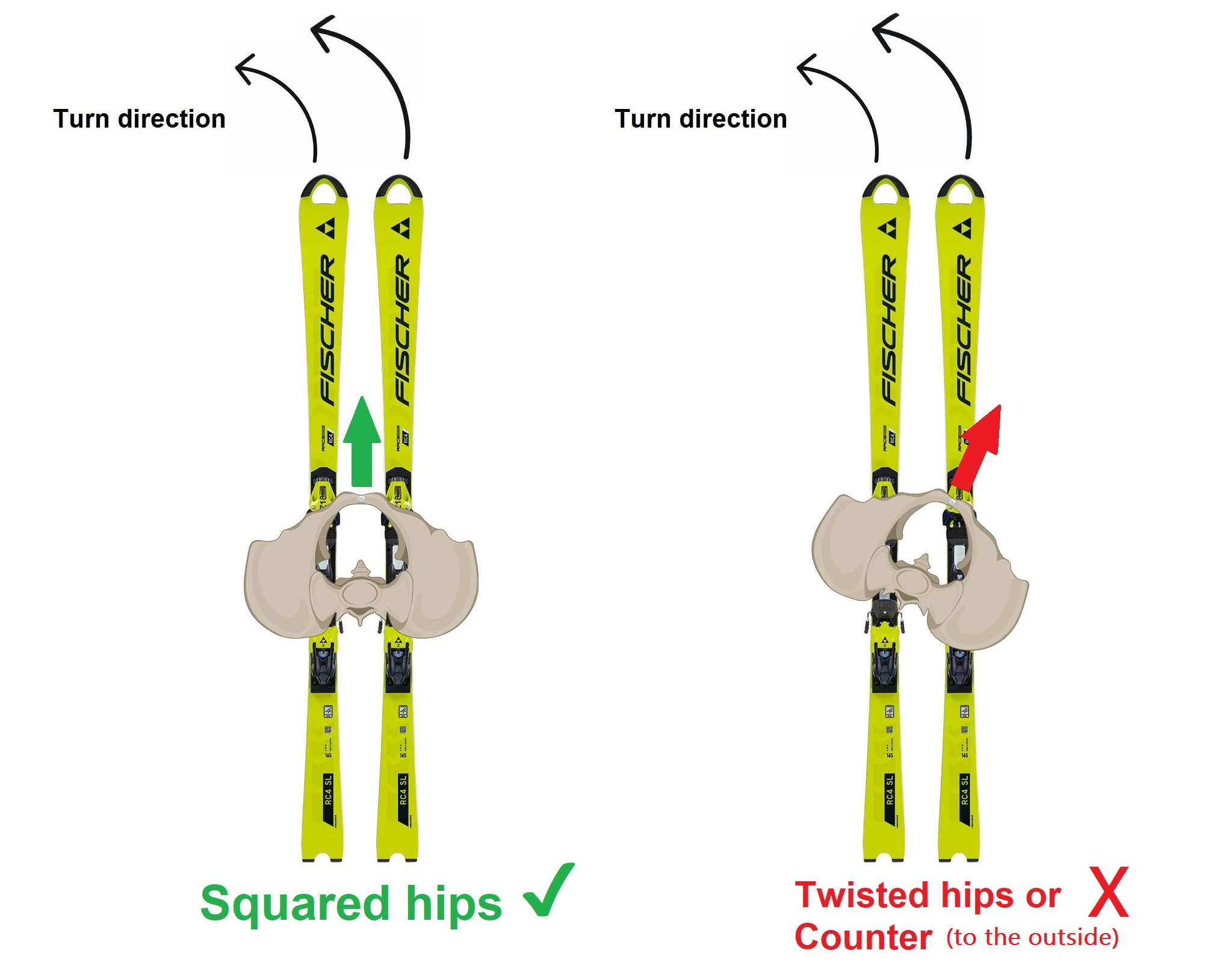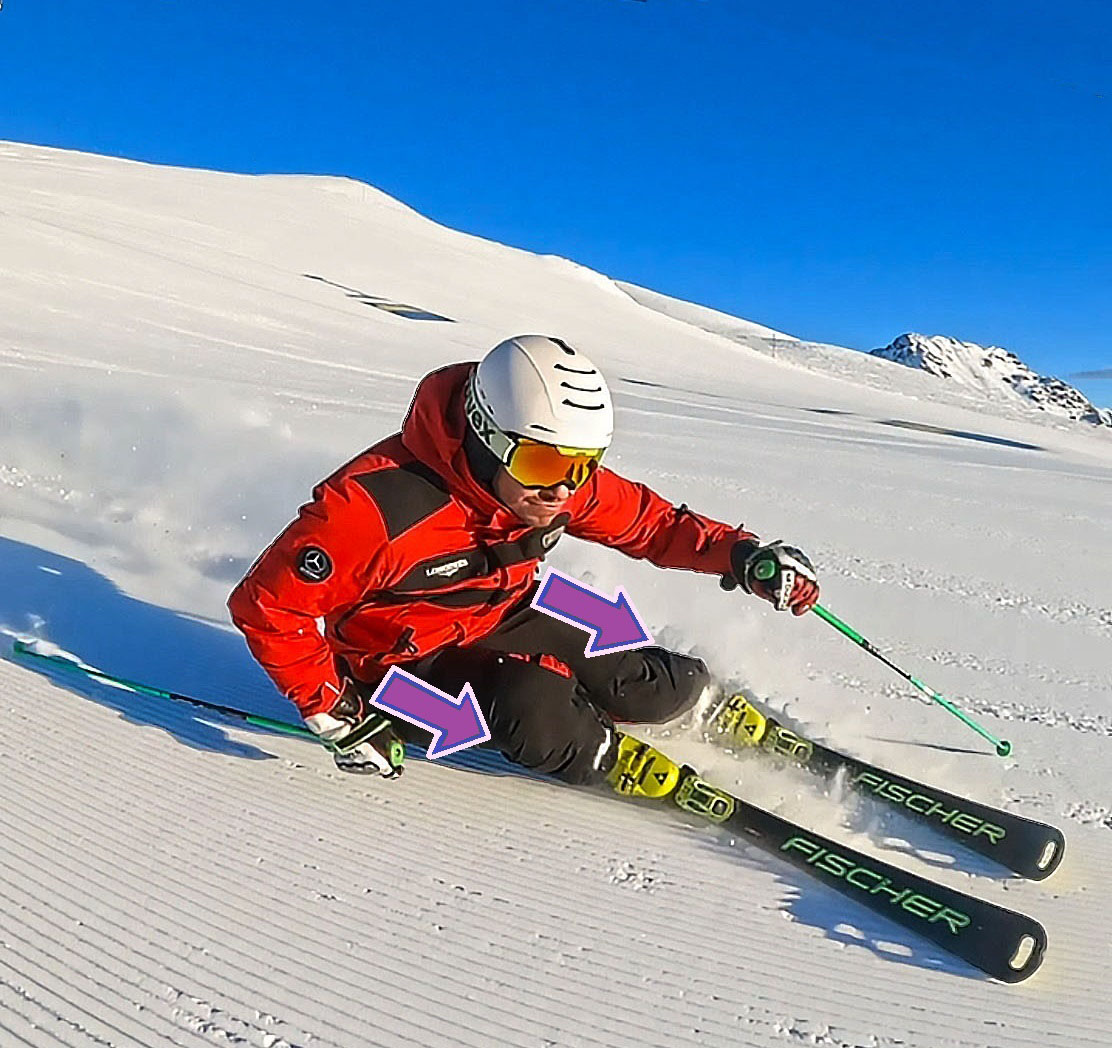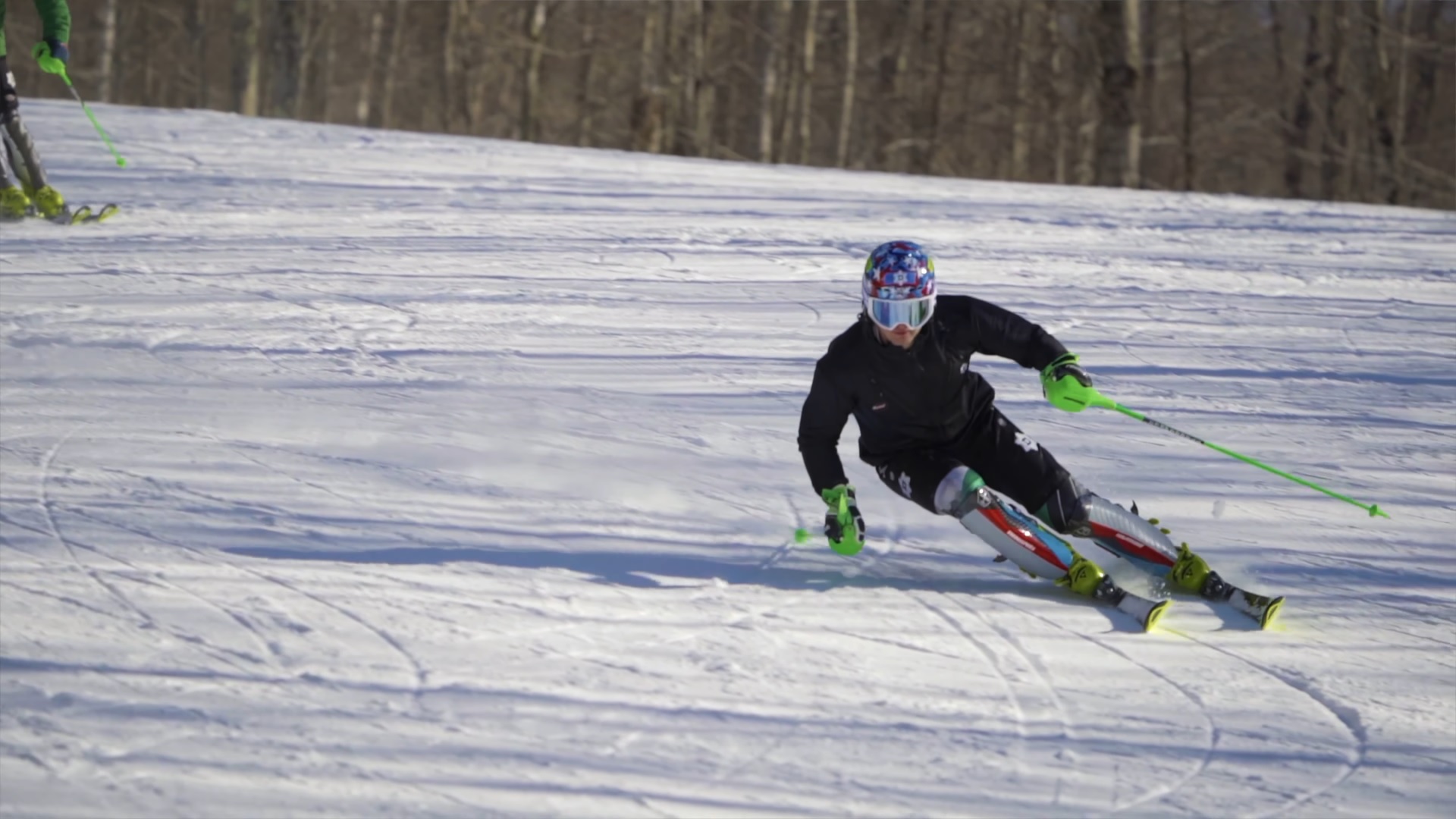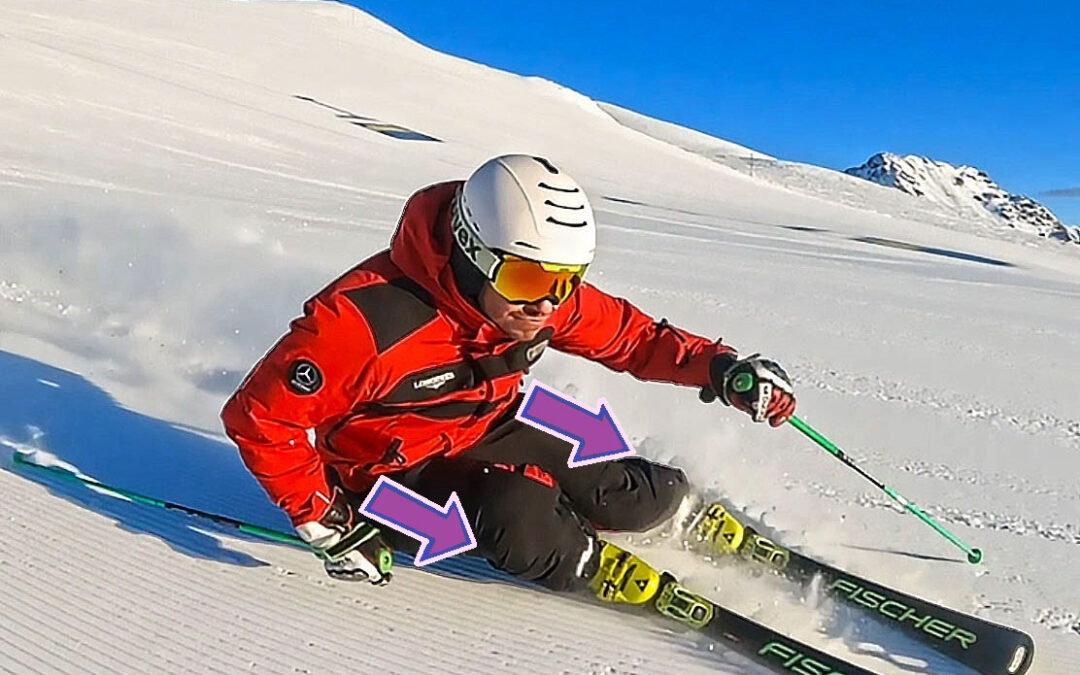Even though the position and movements of the hips throughout the turn are a key aspect in high-level skiing, not many ski instructors teach to the hips often. I think that’s because it is a quite complex topic and not easy to understand and to get right. Actually, the hip area might be the least understood in skiing. In this article, we will try to tackle (what I consider to be) the main points about the correct usage of the hips in alpine skiing.
But first things first, what is the hip joint? The hip joint is the connection point between the thigh bone (femur) and the hip bone (the pelvis). It is the major junction between the lower and the upper body and therefore is key to a human body’s balance. The ball-and-socket design of this joint allows a great range of movement in many directions. Hip movements include flexion, extension, abduction, adduction, circumduction, and hip rotation. It is important to note that in skiing the greatest range of motion for our tipping and for our rotary movements of the skis come from the hips. So I think it is definitely the most important joint in the skier’s body, and the one that connects the upper with the lower body.
As race coaches go: “Keep your hips level and squared to the ski tips”. But what does this mean? Don’t worry, we will cover it in this article. More so, we are going to analyze the hip joint correct movements and positions throughout the turn, regarding three important aspects of skiing technique: lateral, rotational, and fore-aft elements.
Fore-aft balance considerations
Keeping hips over feet: Turn initiation is all about moving our Center of Mass forward to engage the ski tips. We definitely have to move our pelvis forward (by flexing the ankles and or by pulling the feet back), in order to have our hips over the feet and thus initiate the turn correctly. At initiation we need to make the outside ski tip bite and then the rest of the ski will correctly shape through the arc. Also, the strong balanced position in skiing is staying tall with the rear binding behind the outside hip.
Lateral balance considerations
Keeping level hips: this means keeping the imaginary horizontal line that crosses both hips exactly parallelel to the snow surface (or what is the same, parallel to the base of support). Leveling the hips is the most important movement to get the so called upperbody angualtion, which is key to maintain balance on the outside ski as the turn progresses. Furthermore, both the hips and the shoulders lines should be level and parallel to the snow surface. Leveling the hips is kind of mandatory to achieve high performance short turns, as well as medium sized such as slalom turns.
One good drill to practice hips leveling is the “Hip Hike” Mikaela Shiffrin does in this video. Raising the inside hip and shortening the inside leg through the hip flexors and hamstrings.

«Leveling is super important. I mean if you can do that while keeping your hips squared even if it feels awkward at first, that’s like a really good movement pattern«.
Rotational balance considerations
Keeping hips squared to ski tips (being “stacked”): this means keeping them straight pointing at the ski tips and thus to the direction of travel. Alining the pelvis with the skis. That is pointing the pubic bone in the same direction that the skis are pointing to. This posture produces a strong and powerful position to withstand the forces generated in the turn. Also, squareing at the hips results in the new ski loading much more quickly, and achieving higher edge angles earlier in the turn (better turn initiation). Another advantage is that it makes us access better alignment and also allows the ski to bend or shape a deeper arc.
To achieve squared hips, we should try to slightly drive the outside hip forward at the start of the turn, to keep it pointing to the ski’s direction of travel. This means trying to drive the outside ski forward at the begining of the turn and as the arc develops, as the skis bite and shape the arc. Pushing with the outside hip forward at initiation produces more outside ski contact/pressure.
A common mistake is twisting out at the hips to build edging or angles (AKA “counter at the hips). This generates a very unstable and weak position, we lose our power, and it also “blocks” our body keeping us from building more edge angles. Even more important, this twisting out at the hips puts us in the backseat position (fore-aft balance error) and shifts our weight onto the inside ski (lateral balance error).
While twisting at the hips produces some edging, it is not effective edging. We should avoid that at all costs. To avoid twisting out the hips it is a good drill to try to make the outside foot go a little bit faster than the inside foot, in order to remain squared at the hips. You need to perform actually like a little rotation of the pelvis in the direction of the turn in the very first part, in order to have the hips squared.
This explains why I think that the hips and pelvis should be considered part of the lower body, in skiing. Because counter-rotating or twisting out with the hips/pelvis is a quite common technique error… Remember counter-rotation occurs only in the upper body by spinal rotation, not at the pelvis/hips.
Important consideration:
Having said all that, I think that in high-level skiing there is some sligght counter or «twisting out» at the hips but it only happens at the end of the turn, and on short radius turns, steeps, and/or bumps. I honestly think that «Skiing is the ultimate balancing act, and particularly staying in balance into the future…» So this slight counter at the hips at the end of the turn produces a great hip position for the start of the new turn. That is because the old inside hip becomes the new outside hip when we change edges (I.E. start the new turn). Having the «old inside hip» a bit forward (or slightly opened out) at the end of the turn generates a «new outside hip» a bit forward at the start of the new turn, which is the strong position for a good and fast turn initiation, as we already discussed in this post.
Also, the other extreme is also a mistake: over-rotating the hips into the turn. This is also a weak position and produces balance on the wrong ski (the inside ski).

The term being “stacked” refers to being structurally aligned, so the skier is aligning body parts with each other so that the skeleton does as much of the work as possible, with the least muscular effort possible. It is more effective when the body is «stacked» and aligned against the forces of the turn, using the skeleton more than the muscles to support the pressure. Particularly, we stack our body against the outside ski, which is the one that supports almost all our weight during the turn.
In the image bellow, you can clearly see that my hips are aligned and pointing to the ski tips.

«Skiing is the ultimate balancing act, and particularly staying in balance into the future…»
It is also clear in the next image of Alexandros Ioannis «AJ» Ginnis is a Greek-American World Cup alpine ski racer. Ginnis specializes in the technical events, with a focus on slalom. He made his World Cup debut in December 2014 and gained his first podium in February 2023. He then won the silver medal in the 2023 World Championships. Note how the hips are pointed to the ski tips.

Keep ripping some arcs!


Recent Comments